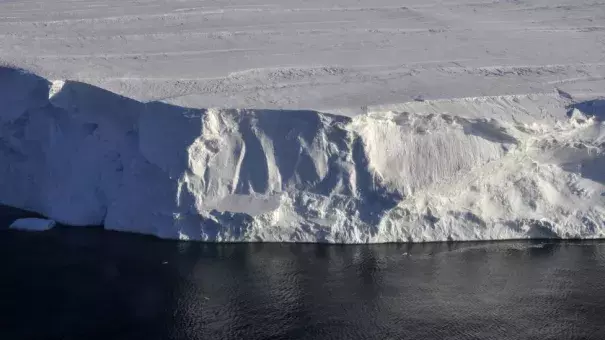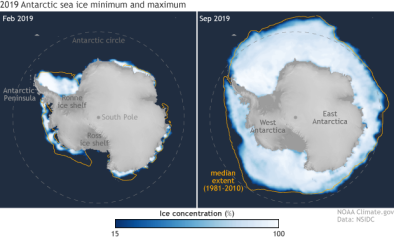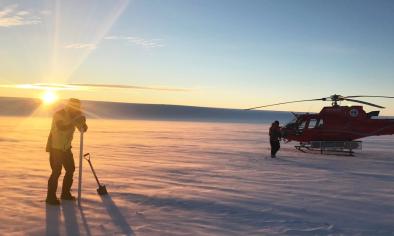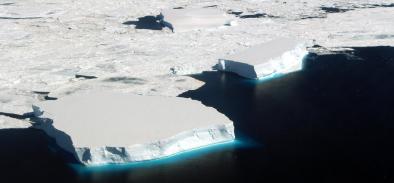Journey to the 'doomsday glacier'

Signals Summary: Warming in Antarctica due to climate change is causing rapid ice sheet and glacier melt in the region, which is greatly increasing global sea level rise.
Article Excerpt: Glaciologists have described Thwaites as the "most important" glacier in the world, the "riskiest" glacier, even the "doomsday" glacier.
It is massive - roughly the size of Britain.
It already accounts for 4% of world sea level rise each year - a huge figure for a single glacier - and satellite data show that it is melting increasingly rapidly.
There is enough water locked up in it to raise world sea level by more than half a metre.
...
What appears to be happening is that deep warm ocean water is flowing to the coast and down to the ice front, melting the glacier.
As the glacier retreats back, yet more ice is exposed.
It is a bit like cutting slices from the sharp end of a wedge of cheese.
The surface area of each one gets bigger and bigger - providing ever more ice for the water to melt.
And that is not the only effect.
Gravity means ice wants to be flat. As the front of the glacier melts, the weight of the vast reservoir of ice behind it pushes forward.
It wants to "smoosh out," explains Dr Riverman. The higher the ice cliff, she says, the more "smooshing" the glacier wants to do.
So, the more the glacier melts, the more quickly the ice in it is likely to flow.
"The fear is these processes will just accelerate," she says. "It is a feedback loop, a vicious cycle."
...
The surface water in Antarctica is very cold, just above -2C degrees, the freezing point of salt water.
The deep warm circumpolar water travels all the way around the continent but has been increasingly encroaching on the icy edge of West Antarctica.
This is where our changing climate comes in.
The scientists say the Pacific Ocean is warming up and that is shifting wind patterns off the coast of West Antarctica, allowing the warm deep water to well up over the continental shelf.
"The deep Antarctic circumpolar water is only a handful of degrees warmer than the water above it - a degree or two above 0C - but that's warm enough to light this glacier up," says David Holland, an oceanographer with New York University and one of the lead scientists at the grounding zone camp.
...
Thwaites is not going to vanish overnight - the scientists say it will take decades, possibly more than a century.
But that should not make us complacent.
A metre of sea level rise may not sound much, particularly when you consider that in some places the tide can rise and fall by three or four metres every day.
But sea level has a huge effect on the severity of storm surges, says Prof David Vaughan, the director of science at the British Antarctic Survey.
Take London.
An increase in sea level of 50cm would mean the storm that used to come every thousand years will now come every 100 years.
If you increase that to a metre then that millennial storm is likely to come once a decade.
Related Content





